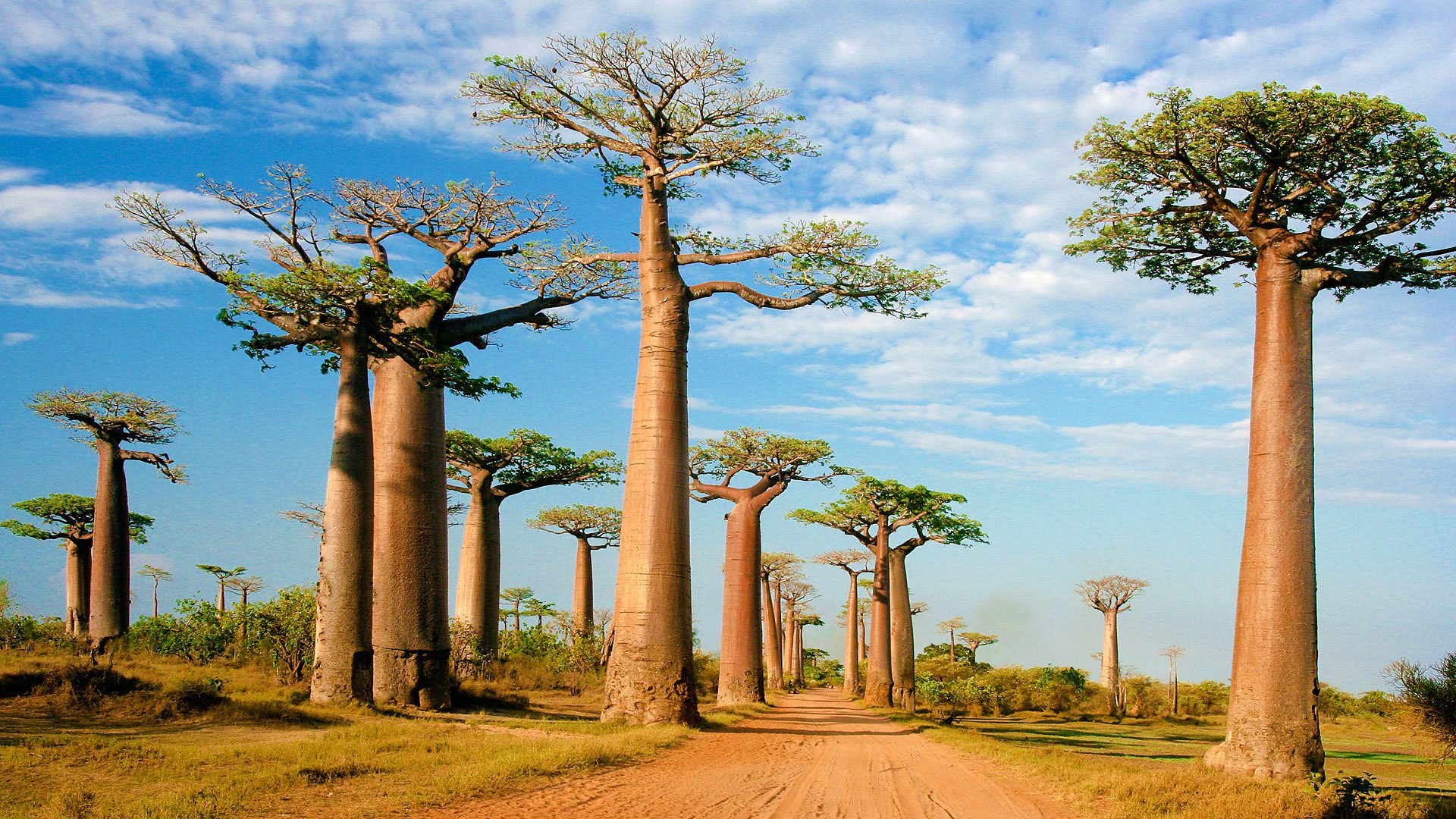
Introduction
In the realm of extraordinary trees, few can rival the
awe-inspiring presence and remarkable characteristics of the baobab tree. Known
as the "Tree of Life" or "Upside-Down Tree," the baobab
holds a special place in the hearts and cultures of the regions it calls home.
With its iconic silhouette, fascinating adaptations, and invaluable ecological
contributions, the baobab stands as a testament to the splendor and resilience
of the natural world.
Iconic Silhouette
One cannot help but be captivated by the baobab's unique and
unmistakable appearance. These grand trees boast massive, barrel-shaped trunks
that can reach enormous sizes, making them some of the largest trees in Africa
and other regions where they grow. The baobab's thick trunk is often topped
with a crown of branches that spread out like roots, earning it the
"Upside-Down Tree" moniker. This iconic silhouette gives the baobab a
mythical and otherworldly allure.
Remarkable Adaptations
Baobabs have evolved a range of extraordinary adaptations
that allow them to thrive in arid and challenging environments. One of their
most notable adaptations is their ability to store and conserve water within
their massive trunks. During the dry seasons, baobabs can store thousands of
liters of water, enabling them to endure long periods of drought. In addition,
their trunks are covered in a fibrous bark that acts as insulation, protecting
the tree from fire and extreme temperatures.
Invaluable Ecological Contributions
The baobab tree plays a vital role in supporting the
ecosystems in which it grows. Its massive trunks provide shelter, nesting
sites, and protection for various species of birds, insects, and small mammals.
The tree's hollowed trunks even serve as natural water reservoirs, providing
much-needed hydration for wildlife during dry spells. Furthermore, the baobab's
large white flowers attract pollinators, while its nutrient-rich fruits are a
valuable food source for a multitude of animals.
Cultural Significance
Beyond its ecological importance, the baobab holds deep
cultural significance in many societies. It is often regarded as a sacred or
mystical tree, symbolizing wisdom, strength, and longevity. Baobabs have been
revered and used by local communities for centuries, with various parts of the
tree utilized for food, medicine, shelter, and even as gathering places for
important community gatherings. The baobab's enduring presence has become
intertwined with the cultural fabric of the regions it inhabits.
Conservation Challenges
Despite its remarkable resilience, the baobab tree faces
various conservation challenges. Habitat loss, deforestation, climate change,
and unsustainable harvesting practices pose threats to these magnificent trees.
Efforts are being made to protect and conserve baobab populations, including
establishing protected areas and promoting sustainable land management
practices. Recognizing the ecological and cultural significance of baobabs is
crucial for their long-term survival.
Conclusion
The baobab tree stands as a symbol of natural wonder, resilience, and cultural heritage. Its iconic silhouette, remarkable adaptations, ecological contributions, and cultural significance make it a true marvel of the plant kingdom. As we continue to appreciate and protect these majestic trees, we ensure that future generations can marvel at their grandeur and benefit from the invaluable ecological services they provide. The baobab tree reminds us of the intricate connections between nature and human culture, underscoring the importance of conservation and sustainable practices for a harmonious coexistence with our natural world.

0 Comments